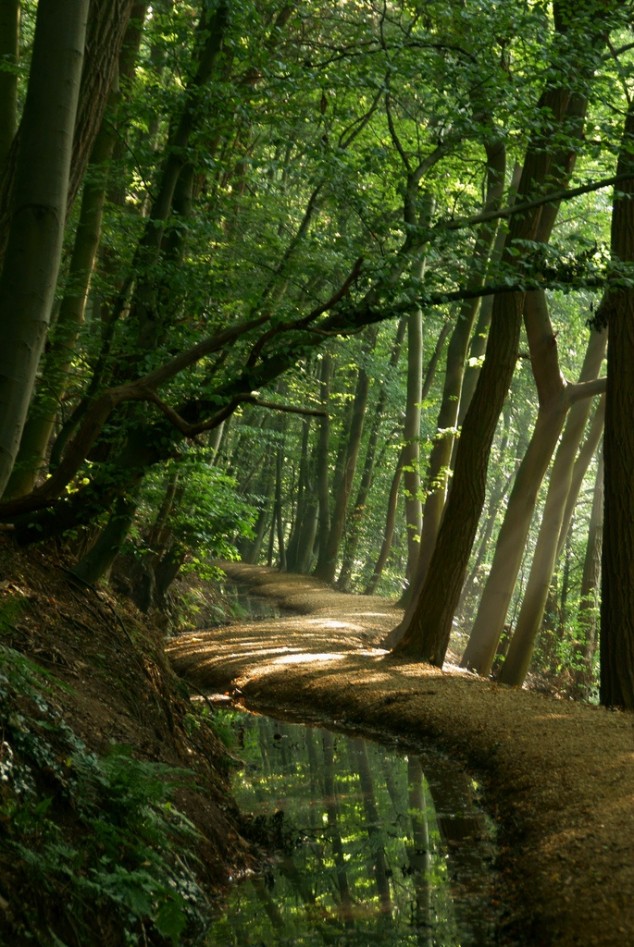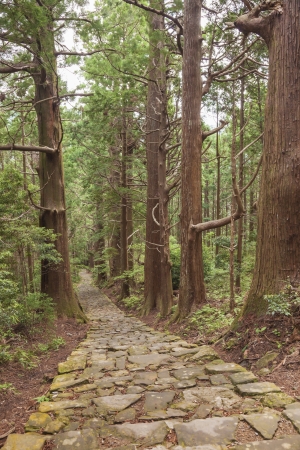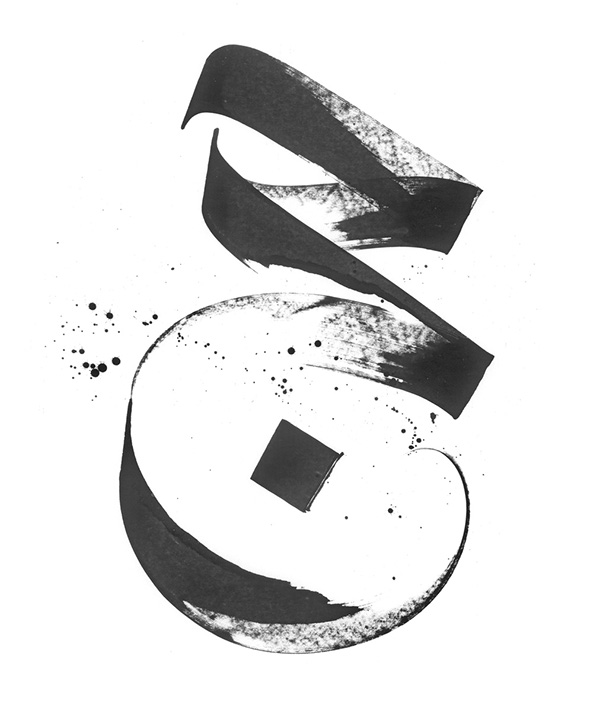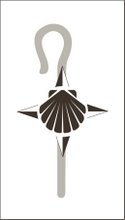Wednesday, January 29, 2014
Snowy trails
It snowed in our patch of earth in NC last night.
This morning, it was smooth whiteness around our yard...until the dogs went out and left a trail of paw prints and more. Criss crossing the yard were lots of paw prints and skid marks where the dogs flellt trying to get a toy out of the snowy yard, or urinated.
Likewise, earth is full of such criss crossing paths. We just don't see it as prominently because of the ability of grass and dirt to quickly revive from our trampling.
Nothing like snow to remind us how we all leave our path upon terra firma.
Buen camino!
Brett
Sunday, January 26, 2014
Follow Me...again, and again, and again...
Gospel reading? Matthew 4:12-23.
The thrust of the passage? Jesus calls James and John to "follow me." Forget the dad, Zebedee: the thrust is with the young sons. Let dad go home with mom, though there is no doubt that soon or later he is going to a follower of Jesus.
Follow me.
32 times, the word "Follow" shows up in the Gospels.
Follow.
That some times means going places we may not want to go, but must go.
"Follow".
That's the thrust of pilgrimage: Follow.
Buen Camino.
B
Thursday, January 16, 2014
Pilgrimage and the Oscars
Amid the announcements of the Oscar nominees this morning, I must say that "Philomena" had the most feel of a pilgrimage, among the "announced" nominees (though others NOT nominated also have the feel of pilgrimage). The pursuit of the mother who is looking for her child taken away from her while she was (almost) held "hostage" at a nunnery in Ireland had the feel of pilgrimage all over it. As Philomena pursued the whereabouts of her son, the son did the same. The satisfaction (spoiler alert) is at the end, when Philomena finds the cemetery site of her now-deceased child...right at the nunnery.
See this film!
Buen camino!
B
Wednesday, January 15, 2014
"Senderismo"
This is Spanish for walking, hiking, or path-following. It literally means walking on trails.
Peregrino is pilgrim.
Soon I will leave for a brief Spanish "senderismo" as a "peregrino" with other veteran pilgrims of Santiago de Compostela. I can't wait!
Buen Camino!
B
Tuesday, January 14, 2014
Walking, and what it means to Philosophers and Writers.
Robert Macfarlane cites the following (p. 27 in "the Old Way"):
Jean-Jacques Rousseau writes that "I can only meditate when I am walking. When I stop I caease to think; my mind only works with my legs."
Soren Kierkegaard speculates that the mind might function optimally at the pedestrian pace of 3 miles per hour.
Christopher Morley wrote of Wordsworth as "emplying his legs as an instrument of philosoph.
Wallace Stevens wrote: "Perhaps the truth depends on a walk around a lake."
Solvitur Ambulando!
Buen Camino!
B
Thursday, January 9, 2014
Ralph Waldo Emerson
Found this quote in Macfarlane's book on walking:
Not a footsteps into the snow, or along the ground, but prints in characters more lasting, a map of its march. The ground is all memoranda and signatures; and every object covered over with hints. In nature, this self-registration is incessant, and the narrative is the print of the seal (1850).
I've always thought that we do not leave our imprint upon the land, and that's it: the land leaves its mark on us too.
Buen camino!
B
Wednesday, January 8, 2014
Macfarlane and "The Old Ways"
One last quote from Robert Macfarlane from his interview on "The Old Ways":
All footpaths are “old ways” in that they’ve taken time to come into being, and have been formed by the passage of many feet. They’re communal landmarks in that sense. It’s tough, tending to impossible, to make a path on your own, save by walking it hundreds of times (as the land artist Richard Long has done). I chose to use the old ways partly because I was fascinated by this network of paths that joined with one another and covered much of the globe (a very different kind of worldwide web), and partly because they seemed to promise a way of walking deeply into, rather than just shallowly across, the landscape. That promise came good.
In Cook Park, near my mom's house in Tigard, OR, there are a mix of tarmac paved trails and trails of mulch/bark dust. I must say that the difference is fascinating: on the tarmac, you kind of feel your joints and that you are walking in a modern day way, while on the trail of wood debris under the large Douglas Firs, there is a sense of nature surrounding you.
Where you walk, the context, matters.
I've also noted the same thing about paths criss-crossing England. I am aware, especially in the northern parts up towards Scotland, that I am walking on paths that have been walked upon for ages. Meanwhile, in the States, because of its vastness, there is still a thrill that I may have walked upon a place that is "virgin" territory.
Buen camino!
B
Tuesday, January 7, 2014
Robert Macfarlane understands pilgrimage
In the NYT.com interview with Macfarlane, I smiled when he said many pilgrimage paths have a habit of re-adjusting our mental and physical, well, being. I would add spiritual as well:
Are there particular routes renowned for producing mental or emotional states?
Among the most powerful old ways I know are the ancient routes of
pilgrimage: the roads leading to Santiago de Compostela, say, or the
paths that circle the sacred peaks of the Himalayas (Kailash, Minya
Konka) and along which Buddhist pilgrims perform their arduous koras.
How else do travelers respond to landscape?
Everywhere I walked — in the Hebrides, the West Bank, Sichuan, Spain,
the chalk downs of southern England — I met people for whom walking was a
means of making sense of themselves and of the world. Scottish
islanders who instead of feeling culturally marginal walked their way
into intimacy with their remarkable home landscapes; Palestinians who
used path-following to discover direction and worth in a political
context of disorientation and disturbance. Conservationists for whom the
“foot-transect” was an indispensable means of data collection.
Just smiling.
Buen Camino!
B
Monday, January 6, 2014
Robert Macfarlane, The Old Ways
Great book by Robert Macfarlane, "The Old Ways" (NY: Viking, 2013).
This choice line about pilgrimage:
...many of Chaucer’s pilgrims traveled on horseback; while the hajj to Mecca now involves air travel for the majority of pilgrims. But there are two obvious differences between walking and vehicular travel. The first is that walking is a full-body experience; mind and body function inseparably, such that thought becomes both site-specific and motion-sensitive. The second is that on foot you are unshielded from the world. There is no sheltering glass or steel between you and the weather, and whoever or whatever you might encounter. Walking a path, you greet or chat with the people you meet: I can’t remember ever having flagged down a stranger’s car on the other side of the highway to talk things over.
Here's link to the book review of the book in NYT: http://www.nytimes.com/2014/01/05/travel/why-walk.html?_r=0
The road, friends: the road calls!
Buen camino!
Brett
Wednesday, January 1, 2014
What is a pilgrimage?
Happy New Year!
I asked "ask.com" what is a pilgrimage.
The answer?
A pilgrimage is a journey in which one travels a distance to pay their respects to a religious icon. Some people go on pilgrimages so they can be healed. A pilgrimage is often considered as a transformational journey during which significant changes takes place in one's life.
I believe "a transformational journey" with "significant changes" taking place in my life is about to happen in 2014.
The School of the Pilgrim will continue to grow this year in new and unexpected ways.
Pax!
Brett
p.s., above is a symbol of/for balance. I'll need it this year.
Subscribe to:
Comments (Atom)










